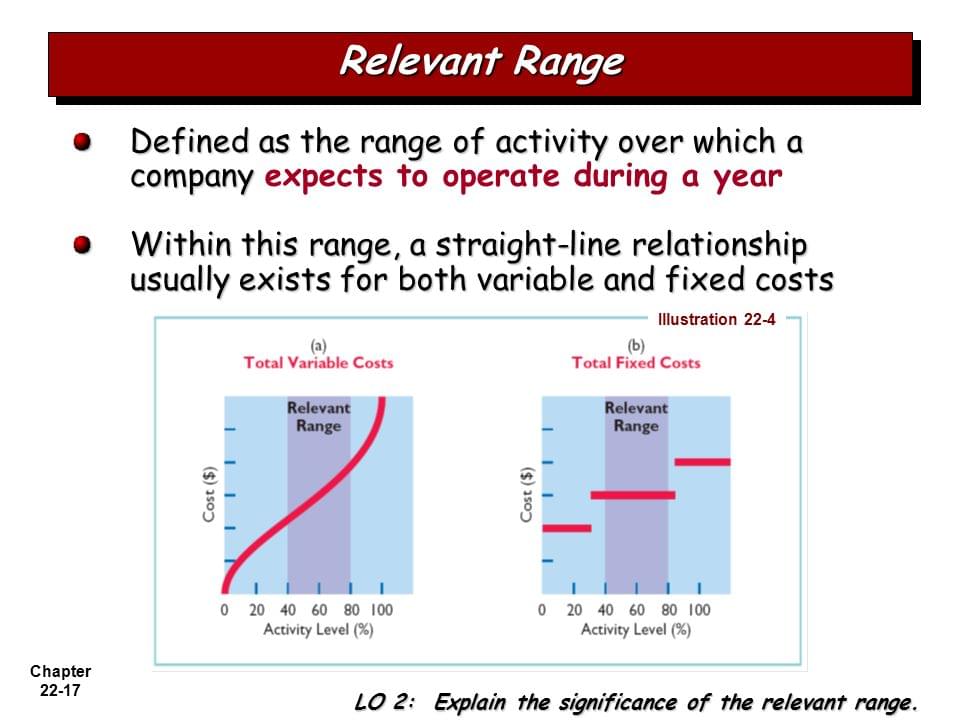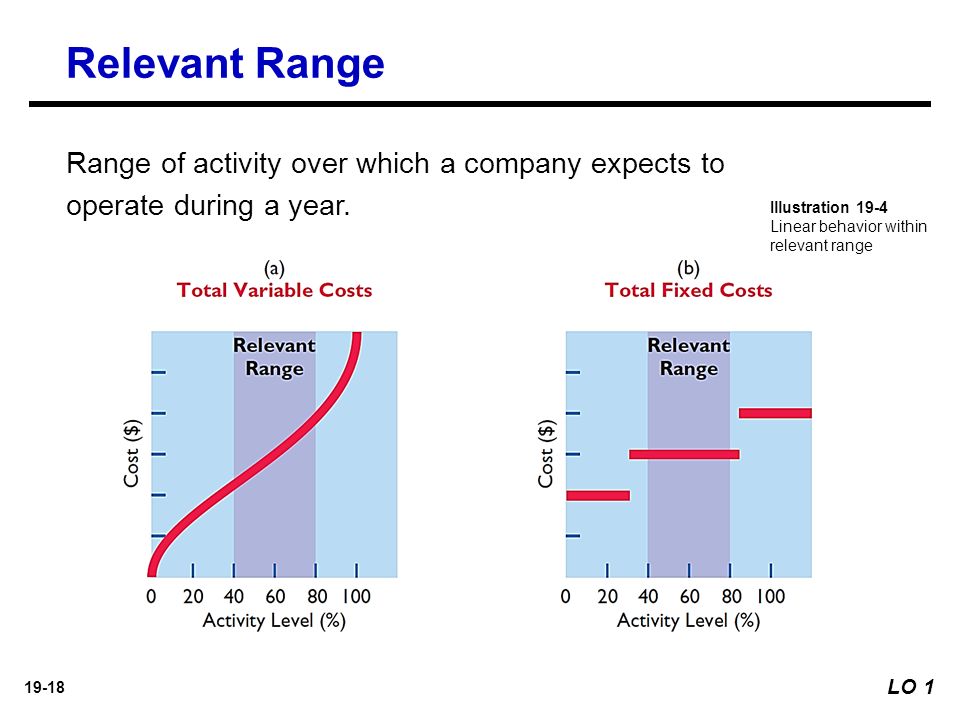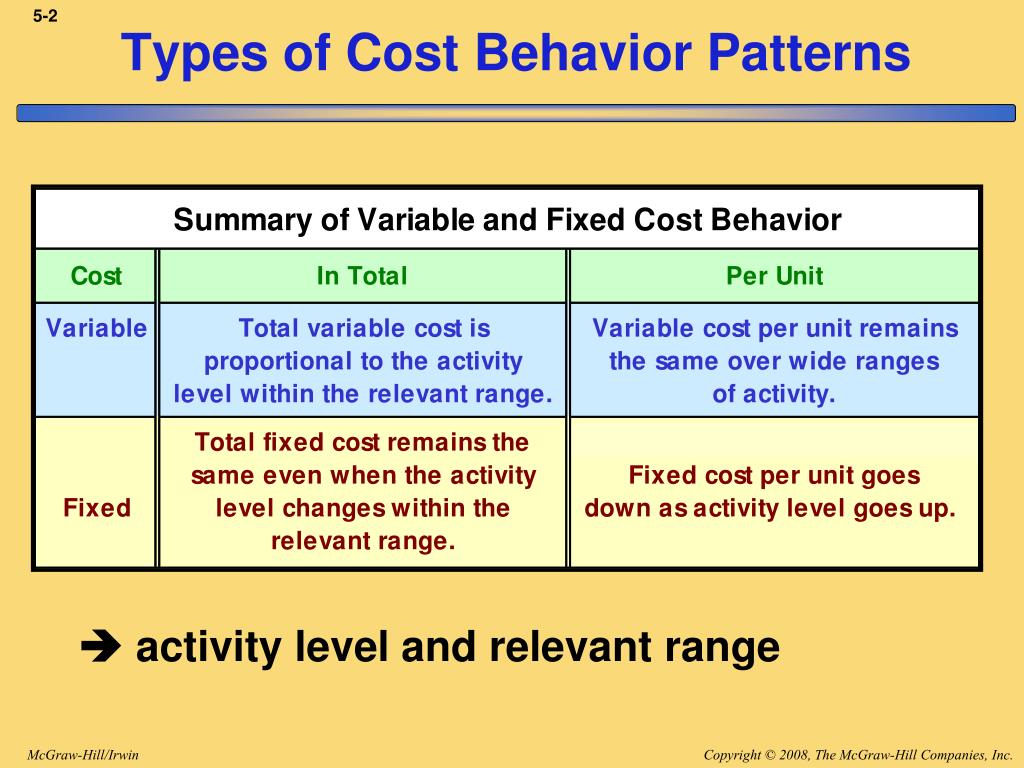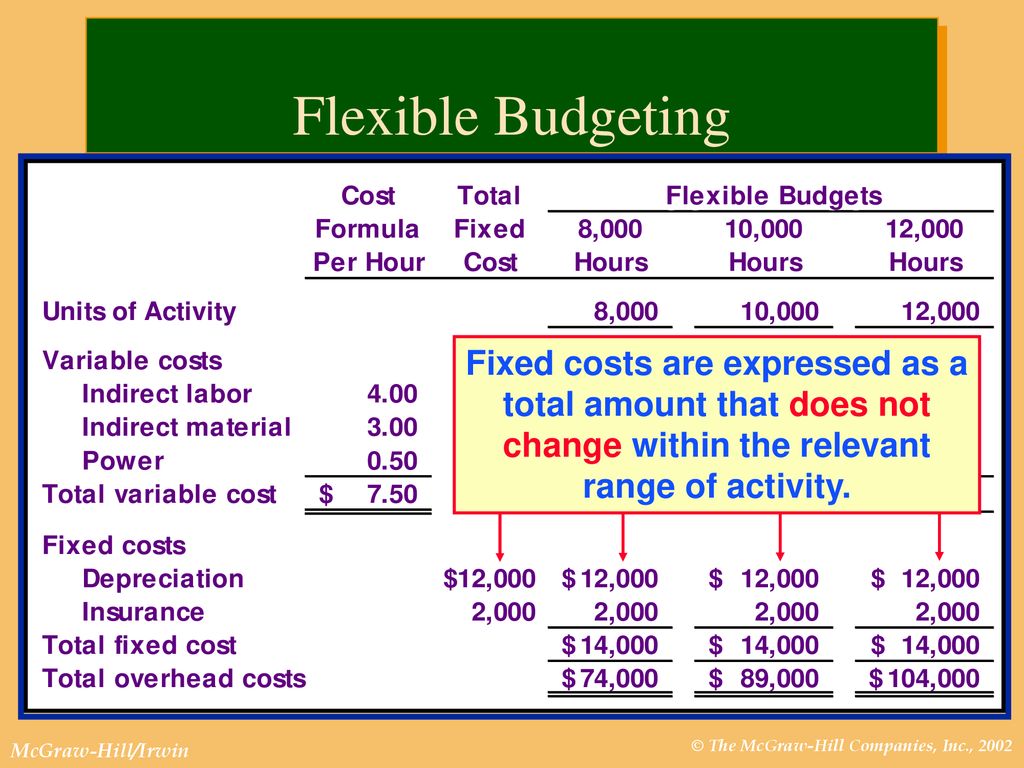Within The Relevant Range Of Activity Costs

Urgent cost fluctuations are shaking businesses: Understanding the "Relevant Range" is now critical for financial stability.
Companies are grappling with unpredictable cost behaviors within their operating capacities, threatening budget accuracy and profitability.
The Relevant Range Defined
The relevant range is the activity level where fixed costs remain constant and variable costs fluctuate predictably, according to the Institute of Management Accountants (IMA).
Beyond this range, cost behaviors change, invalidating initial assumptions and projections, says a recent report by Deloitte.
This can lead to severe financial miscalculations.
Impact on Fixed Costs
Fixed costs, like rent or salaries, are expected to remain constant within the relevant range.
However, exceeding this range often necessitates increased capacity, triggering significant increases in these fixed costs, as per a study by PwC.
For example, a manufacturing plant operating beyond its design capacity may need to lease additional space or invest in new equipment, dramatically altering its fixed cost structure, as indicated by KPMG analysis.
Variable Cost Volatility
Variable costs, such as raw materials and direct labor, generally fluctuate in direct proportion to activity levels within the relevant range.
But, exceeding this range can lead to inefficiencies and increased costs per unit, cautioned Grant Thornton in a press release this morning.
Overtime pay, expedited shipping, and material shortages can drive up variable costs unexpectedly, as exemplified by the current supply chain disruptions reported by Bloomberg.
Companies Affected
Numerous sectors are vulnerable.
Manufacturing firms like General Electric (GE), retail giants like Walmart, and service providers like Accenture face unique challenges in managing costs outside the relevant range.
Smaller businesses with limited resources are especially vulnerable, emphasizes the Small Business Administration (SBA).
Case Studies
GE recently reported lower-than-expected earnings, partially attributed to increased overtime costs and supply chain inefficiencies outside their projected relevant range.
Walmart is facing increased distribution costs due to surging demand, exceeding the capacity of their existing logistics network, according to their latest investor call.
Accenture is managing escalated project costs by relocating resources and re-evaluating project scope.
Mitigation Strategies
What can be done?
Experts recommend implementing flexible budgeting, conducting regular cost-volume-profit (CVP) analysis, and scenario planning, as suggested by Harvard Business Review.
Companies should invest in real-time data analytics to monitor cost behavior and identify deviations from projected trends, advises the AICPA.
Flexible Budgeting
Flexible budgets adjust automatically to changes in activity levels, providing a more accurate picture of expected costs.
This allows for better cost control and performance evaluation, even when operating outside the initially planned relevant range.
SAP and Oracle offer software solutions to facilitate flexible budgeting.
Cost-Volume-Profit (CVP) Analysis
CVP analysis helps businesses understand the relationship between costs, volume, and profit.
By regularly updating CVP models, companies can better anticipate the impact of changes in activity levels on profitability, as per the CFA Institute.
This includes identifying the break-even point and margin of safety.
Scenario Planning
Scenario planning involves developing and analyzing multiple possible future scenarios.
This allows companies to prepare for various contingencies and develop proactive strategies to manage costs effectively under different conditions, according to a whitepaper by McKinsey.
It's crucial for identifying potential risks and opportunities associated with operating outside the relevant range.
Immediate Action Required
Businesses must immediately reassess their cost structures and operating assumptions.
Ignoring the impact of cost behavior outside the relevant range can lead to disastrous financial consequences, warns the Financial Accounting Standards Board (FASB).
Proactive measures are essential to ensure financial stability and maintain profitability in an increasingly volatile economic environment.
Next Steps
The IMA is hosting a webinar next week on managing costs outside the relevant range, offering practical guidance and case studies.
FASB is expected to release updated guidance on cost accounting principles in the coming months.
Companies should monitor these developments closely and adapt their strategies accordingly.


















